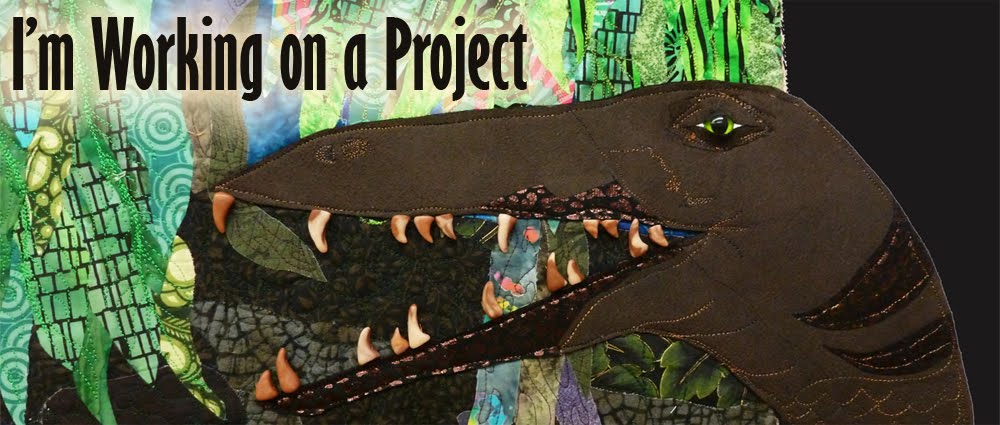Inspired by the 3D renderings and micrographs of viruses and bacteriophages (like these) and the concentric ring type design of a topo map, I built a multi-layered file in illustrator in which each layer could serve as a cutting template for my silhouette.
Because each layer would have cutouts, it was important for me to use some sort of non-fraying fabric. Normally I would just seal fraying edges with my woodburner, but I really wanted this to have exact and precise edges so that each layer would line up, so a non-woven fabric was essential. I also wanted something I could get fairly cheaply. After looking around for a while, I settled on a non-woven from my local awesome upholstery supply store. The owner called it remay, but it doesn't have quite the same consistency as other fabrics I've seen called that. It's basically the stuff used to cover the bottoms of upholstered chairs or the tops of box springs. I got ten yards of it in white, and then painted it.
I used the latex paint left over from this project so the dark grey-blue-purple color scheme may feel familiar. I also decided to include a pop of yellow and used up some old acrylic pain I inherited from my grandmother. I painted each piece of the remay, and set them to dry on some recycled plastic. I mostly just didn't want to waste the plastic, but leftover stuff on the plastic from previous projects gave some of my pieces fun and unexpected texture!
There were ten layers in my file and my goal was to make two panels, one with cutouts piled up like mountains, and one with the frames from the cutouts piled up to make canyons. I started by cutting out each layer and keeping both the frame and the insert pieces. Here you can see a few of the different frames with the holes being different sizes in each layer.
After cutting all the pieces out, I had to decide how to stack them up. I started by quilting a base for each panel using extra painted pieces and then started laying out my cutouts. I started with the "mountain" piece. I wanted to have a lot of depth in the piece, and when I just piled up all the pieces, they still looked pretty flat, so I decided to put a small piece of heavy duty peltex between each layer. I had to stitch them all by hand since the layers quickly got way too fat to fit under my sewing machine. It was quite a challenge to figure out how to keep the pieces straight and lined up correctly. Even more challenging was physically stitching through everything. Stitching through a quilt sandwich is fairly easy. Stitching through a quilt sandwich plus a layer of fabric and a layer of peltex is also fairly easy, but by the time I had ten layers of peltex and ten additional layers of fabric, I could barely get the needle through. It was definitely a project for multiple thimbles and many many broken needles.
In the bottom picture you can see many of the "mountains" only have a few of their layers stitched down. Each layer had to be stitched down separately because the top layers are so small that if I'd just stitched through the center (to get all the layers at once) the bigger bottom layers would shift around too much and not stay in the right place.
I got them all finished (yay mountains!), and now I'm working on stitching the other panel, the "canyons" which is a whole different kettle of fish with it's own set of challenges. I'm trying to finish this for an entry due very very soon, so hopefully I'll have another update next week.
When you look up close you can see the texture in the fabric- it's almost like paper towels, but it feels much sturdier, not like paper at all. In person it's kind of fun to look at since not all the "mountains" have the same number of layers, so some are shorter than others. It's been fun working on this and definitely a learning experience!!
Linking up as always with Nina-Marie.






So interesting hearing about your process and I just want to reach in my computer screen and touch! Love the idea and looking forward to seeing the completed project.
ReplyDeleteSo very interesting!
ReplyDeleteYou always come up with the best ideas! Love this one, too.
ReplyDeleteInteresting! I have some of that in the studio. We call it cambric. Will have to try some paint on it and see what happens.
ReplyDeleteLove how you experiment and persevere. That yellow middle layer makes all the difference aesthetically.
ReplyDeleteIf you need any more Reemay, you can get it from here: http://www.museumservicescorporation.com/scat/sh.html#i
ReplyDelete